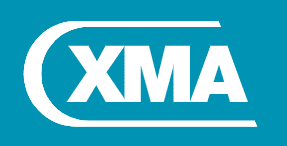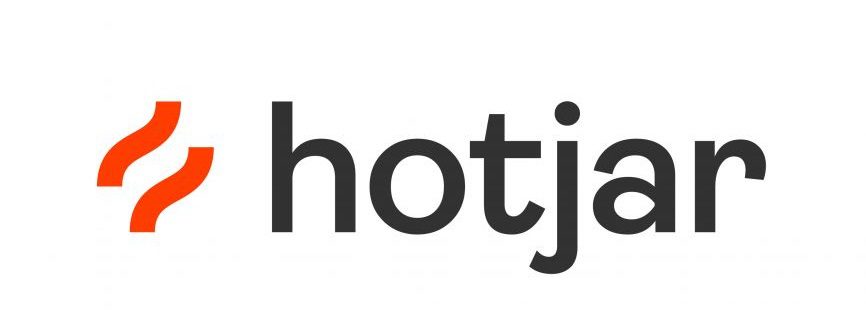2 rules of thumb as you modernise your Data Centre
There are two rules when it comes to modernising your datacentre but what it boils down to is focusing on a good outcome.
Rule #1: Keep it simple
When technology needs an update, some organisations choose to modernise over time, following the same problem-by-problem approach they used to build the original data centre. This piecemeal approach is complex and can be agonisingly slow. What’s worse, all that time and effort won’t necessarily lead to a better end product or even lower costs.
Instead of focusing on daily problems that arise, hyperconverged infrastructure (HCI) lets you focus on the outcome: a simpler data centre that’s cost-effective and easy to manage. HCI takes a building block approach to architecture, consolidating compute, storage, network switching, replication, and backup in a single integrated system. The consolidation of these IT functions onto virtualized hardware can greatly simplify environments that have been divided by siloed point solutions.
VM-centric HCI systems are also simple for IT administrators to manage, and require much less data centre space than traditional IT devices.
Rule #2: Don’t overspend
Hyperconvergence requires some upfront investment, but it can deliver a huge return on that investment. In this study based on research with real world customers, Forrester Consulting found that HCI reduces TCO by 69% on average compared to traditional IT. Converging the entire IT stack – firmware, hypervisor, and data virtualisation software – has additional advantages, according to that same study. Data centre footprint can be reduced 10:1, backups and disaster recovery become simple and straightforward, and upgrades are managed for the whole stack. The most efficient solutions also free up significant staff time, boosting the economic benefits even further. IDC reports an 81% increase in time available to focus on new projects as a direct result of hyperconverged deployment.
Our data centre solutions guarantee high availability, reliability and security for your infrastructure
Read More
How to avoid printer conversations
Avoid awkward privacy and security vulnerability questions with a secure print set-up.
Network-connected printers can be a route into your company for cyber criminals. For example, if default passwords are still in use or your Wi-Fi network is unsecure, your printing is vulnerable. By failing to tackle these potential weak spots, your business is in danger of GDPR’s heavy-weight penalties.
Just 22% of all businesses surveyed were completely assured their print infrastructure was secure.1
Companies operating a standardised printer fleet are 26% less likely to suffer data loss.1
Make sure printer security doesn’t put your business in peril—download the report by entering your details below
1 Quocirca Managed Print Services Landscape, 2017. European survey results of 180 midmarket (500-999 employees) and large (1000+ employees) organisations in UK, France and Germany using a managed print service.
Does your technology make the grade? 4 reasons why technology is critical to learning
With GCSE results out today and expected to have been the toughest yet with the new grading system, it got us thinking. How essential is technology to the way our students learn?
When I think back to my school days, which actually weren’t too long ago (no, really!), the overhead projector was the latest mod-con to hit the assembly hall and the chalkboard was still the smartest way to share real-time lesson content.
Well, technology has come a long way since those days, yet we still managed back then. Students were still learning, achieving and prospering from their education. So if we were able to nurture success before the technology boom, why is it so important in today’s classroom?
Here are 4 reasons why we believe technology now plays a critical role in learning:
1. Students demand it
Teens spend nearly 9 hours every day consuming media and have grown up immersed in technology, so keeping up with this demand is essential. The innovative adoption of technology can also play a key role in the recruitment of the next student body but IT departments should ensure that core infrastructures and applications have the flexibility to support these changes.
2. Learn at their own pace
Traditional learning could often be fast paced, risking a drop off of concentration and understanding. With the integration of technology in the classroom and learning concepts such as flipped learning, students can learn at their own speed, pause, and recap whenever they need, meaning that the more advanced student can go ahead, freeing up the teacher to provide support 1:1 to those who need it.
3. Enhance Engagement
Feedback from our customers over the years suggests that students learn best being more interactive. This is particularly apparent in STEAM subjects where content is often more complex. Technologies such as 3D print and robotics are leading the way in STEAM by breaking down the learning barriers and offering more practical methods of learning, whilst future-proofing students as they enter the workplace.
4. Enable Collaboration
Technology permits a connected world and in this case, a connected learning environment. With intelligent applications such as Office 365 and G Suite, students and teachers can communicate, collaborate, chat and use the familiar productivity applications in a secure environment.
As experts in education technology, we are close to the market and its trends. Here are a few technologies that are already making a real impact in the classroom:
Chromebooks
Chromebooks are taking over the classroom and the reasons are simple. They are cost effective and affordable, feature an all-day battery life and instant on functionality; and with Chromecast, students and teachers can instantly share their screen.
If you are interested in Chromebook, you should check out our latest offer! You can get a HP Chromebook for as little as £65.00!
3D print
For reasons we’ve previously discussed, 3D printing can play a valuable part in STEAM subjects, transforming the classroom into an interactive learning environment.
iPad
iPad is the ideal computing companion both inside and outside of the classroom. Its portable format, instant load up time and touch screen makes life easy for teachers and students alike. Perfect for internet research, making videos and music, taking lesson notes and sharing and managing content. What’s more, iPad is now much more cost effective and has full integration with cloud platforms such as Google and Microsoft.
So it’s clear, we have come a long way since school days were guided by a text book and piece of chalk. The dawn of the internet revolutionised the way we gained information and technology evolved around us – so much so, that teens today are technology native and would probably rather swap their right kidney than sacrifice their mobile phone.
That said, technology has enabled personalised, engaging and even mobile learning. Its enhanced collaboration and takes traditional subjects such as science, engineering and technology to the next level. Without it, the classroom struggles to thrive which is why building a technology environment that supports these trends is essential.
Is your tech up to the task?
Not sure how to enable cloud managed mobility, whether your network can support the load or how flipped learning can really make a difference? Our specialists have the answers and can help determine whether your existing IT is up to the job.
Ben Brown
Head of Schools
5 considerations for moving to an All-flash data centre

Simplifying All-flash with HPE Nimble
The path to an all-flash data centre and cloud may be complicated, but it doesn’t have to be disruptive. Like many other organisations, you may be planning to move to all flash as your primary storage technology because of the many advantages over traditional storage.
But there are many obstacles related to application performance, availability, manageability, scalability, investment protection, and disaster recovery that need to be considered first. With a few simple recommendations, your organisation can avoid the most common missteps and make the transition painless.
Download this FREE check list and find out how to overcome the obstacles related to the all flash data centre.
4 reasons why you should talk to us about establishing a technology benefits scheme
Establishing a technology benefits scheme is an effective way to engage and excite your people. Through salary contributions, you can enable access to the latest technology, at unbeatable prices.
Here’s 4 reasons why you should talk to us about establishing a technology benefits scheme at your organisation.
1. Purpose built XMA Benefit Store
Our exclusive secure online store, provides access to preferential pricing to employees of public and private sector customers, as well as parents and students in education. Simply register for an account using your organisation email address to access a huge range of promotions and discounted prices on leading high street technology brands.
2. The choice really is yours
With over 6,000 products to choose from, you’ll be spoilt for choice. We have an extensive range of computing products including laptops, desktops and tablets from all the biggest brands, printers and printing supplies, iPhone and Apple Watch, along with all the accessories you’ll ever need.
3. Hassle free
We provide a simple, easy to deploy programme with minimal effort and no cost to your organisation.
4. Quick and easy
It was always our intention to keep this process simple – and we won’t keep you waiting around. Simply let us know that you want to be a part of XMA Benefits Store we’ll do the rest. And for products in stock, we’ll even deliver them next day, for free, to your home or workplace.
We can give you the best advice, ordering experience, pricing and product selection, so why not visit the XMA Benefit Store and see for yourself.
It Isn’t Easy Being Green – But Hyperconvergence Can Help
Everyone seems to be looking for ways to be more “green” these days – hybrid cars, reusable grocery bags, etc. And those in IT are no exception. Traditional IT environments consume an incredible amount of energy resources, such as power and cooling. The key for organisations focused on moving towards a greener data centre is to emphasise efficiency in energy consumption and efficiency in IT processes and systems. In other words, green IT needs to align to efficient IT.
The road to a greener data centre is paved both by small, incremental changes as well as monumental technology shifts. Advancements in software often naturally lead to more energy efficient data centres. For example, hard drives are now built to consume less power than in the past, new server features help reduce superfluous cooling costs, and data optimization techniques, such as inline and at inception deduplication and compression, lead to efficiencies in processing, storage, and backup.
Hyperconvergence represents a major technology development capable of transforming the data centre into a lean, green, efficiency machine. By converging all IT below the hypervisor, hyperconverged infrastructure immediately makes the data centre more efficient and environmentally sound. The data centre goes from as many as 12 disparate IT components to a single solution, so there is no longer a need to utilise storage space, power resources, or cooling functions on these IT components.
In fact, an IDC whitepaper found 75% of respondents realised an average of a 65% improvement in utilisation of storage resources as a result of hyperconverged infrastructure. In addition, nearly half of surveyed customers realised a 47% reduction in cost of data centre power and cooling expenses.
Though revolutionary, hyperconverged infrastructure is not a rip-and-replace technology as it can be introduced into existing environments as part of normal refresh cycles. For example, a hyperconverged solution can first be deployed in place of traditional data storage as a first step to modernising a data centre, and can later replace additional IT components over time as needs arise. This approach offers an opportunity to simplify the existing infrastructure and the complicated process of updating that infrastructure. Once standardised on a hyperconverged solution like HPE SimpliVity powered by Intel®, IT teams would only have a single product to refresh instead of a variety of separate IT components – which helps explain why 26% of customers in that same IDC study cited the need for fewer tech refresh cycles.
Hyperconvergence has always been focused on simplifying and consolidating the data centre. It’s no surprise that organisations looking to reduce their environmental footprint have discovered significant “green” opportunity in hyperconvergence. The benefits in space utilisation and operational efficiency make it more than worthwhile to implement a hyperconverged solution and transform your data centre into a lean, green efficiency machine.
5 ways MPS could benefit your business
When you have existing printers you’ve already bought and paid for, it’s tempting to think that maintaining your existing fleet will cost less than purchasing new printers or signing up managed print services (MPS). Why replace them if it’s not absolutely necessary?
The costs of an ageing fleet stack up, and in the long term, managed print services are able to save you more than just money. Here are five benefits MPS could bring to your organisation. Many businesses allow outdated, legacy printing devices to negatively impact productivity. Learn about the positive impact Managed Print Services can have on your business in this report from IT Pro.
1 – Cost savings
The consequences of sticking with an old printer are sometimes hidden, and can work at various levels, from running out of toner when you want to print an essential document, to the device breaking and your IT department being too busy to fix it. These consequences cost money, and the benefit of using managed print services is that you have the maximum availability of print when you need it most.
An MPS provider will look for ways to rationalise and consolidate your printers, replacing many old, large laser printers with a smaller number of newer, better distributed, faster devices or multi-function printers with all the necessary functions built in. Costs are visible and predictable, and you never have to worry about the expense of replacing ink and toners at different times across the business.
Maintaining your old printers might seem to help you keep costs low in the short term, but in the long term you’ll miss out on cost-saving opportunities, while facing expenses and uncertainties that MPS providers are there to alleviate.
2 – Efficiency
Old printers waste valuable time, which always has an impact on the bottom line. Not only does the time spent waiting for a slower printer really add up over a business year, but every paper jam and malfunction means more wasted time that could be used more productively.
An MPS provider will come in and analyse your business, printers and requirements in terms of printing, scanning and copying. This doesn’t mean pushing expensive hardware into every corner of the business, but instead they will look at where teams need specific capabilities, then will find the printer/s that will match those needs.
A really good provider will go further and look at ways that the business overall can print more efficiently, and save money by reducing the everyday print costs.
3 – Minimised downtime
In many organisations, employees can end up spending excessive amounts of time dealing with printers – not just waiting for old, slow devices to print, but dealing with malfunctions, changing cartridges, adding paper or waiting for someone from IT to fix a problem.
A good MPS provider will help reduce support costs and minimise downtime. Because it’s their job to maintain your printers and keep them running with a steady stream of supplies, your own IT team frees up its time to work on other projects.
4 – Up-to-date security
Newer printers have better tools for maintenance, management and most importantly, security. This has never been more important, with every old and outdated device now a potential security risk. Options like pull-printing, cloud printing and printing from mobile devices have gone from being expensive extras to standard features, while NFC and ID card-based authentication are no longer the preserve of larger businesses.
MPS providers are there to sort out things like security updates or rapid changes to firmware. With more threats out there and greater penalties for data breaches, that’s good news for businesses of every size.
5 – Environmental benefits
Do your existing printers have effective, high-performance duplex printing enabled? If not, you could be missing out on features that could save you up to 40% of your paper costs, according to some studies.
MPS providers look for ways to reduce waste, helping businesses make more effective use of more advanced printers and functions. Such printers have management features that prevent or discourage wastage, can restrict the use of colour, make duplex printing the default, or switch on pull printing, so that print jobs only print when actively requested from the printer. This can see drastic reductions in the number of printed pages left abandoned in the output tray.
Meanwhile, more modern, high-quality draft and eco-printing settings could use up to 50% less ink than standard modes, while producing output that’s easily good enough for both internal and external usage.
Source: HP
Enabling Success in Education
In a recent Education survey* Lexmark identified three key points based on the research project findings, in which Lexmark can help enable the Educations sector save time, money and the environment through its productive, secure and sustainable solutions.
Approximately 12% of respondents spend up to four hours scanning hard copy documents per week and 41% can’t qualify the amount of time they are spending scanning hard copy documents.
Enabling productivity
Lexmark’s smart multifunction printers are leading the way in delivering productivity enhancing features, using innovative touchscreen technology that can help manage costs more effectively and work smarter.
99% of respondents believe device security is a high or medium priority, but only 57% are confident that they have a security solution in place.
Enabling security
Lexmark makes security an integral part of all products to help create a safer and more productive environment for your school, college or university.
81% of people place at least a medium priority on the environment in their decision-making process when purchasing new printers.
Enabling sustainability
Lexmark is a recognised industry leader for sustainability initiatives and supports a number of environmental features which allow users to reduce the environmental impact of their printing and imaging activities.
Read More
Top 5 causes of downtime across the infrastructure stack
When access to your data lags, your business lags. Understand how to apply machine learning in your data center to predict and prevent the problems that cause downtime.
This research by Nimble Storage, a Hewlett Packard Enterprise Company, outlines the top five causes of application delays. The report analyses more than 12,000 anonymised cases of downtime and slow performance. Read this report and find out:
- Top 5 causes of downtime and poor performance across the infrastructure stack
- How machine learning and predictive analytics can prevent issues
- Steps you can take to boost performance and availability
Download the free report by completing the fields below
Beating customer SLA’s
HPE InfoSight took infrastructure management out of the equation for Rent-a-Center, and freed up staff time to execute instead of managing storage. Hear from their Director of Technical Operations on how they transformed.
Watch video
Supporting local employability workshops
Utilising key staff across XMA and our partners businesses, we run employability workshops within the University that will support the embedding of employability skills in areas such as:
- Team working and collaboration
- Business and customer awareness
- Application of IT
- Self-management
- Interview and presentation skills
- CV workshops
- Problem solving
- Communication and digital literacy
XMA already support the CBI’s employability initiative and Guy Bates from XMA recently coached a group of PhD students as part of the Digital Economy YES Programme’s (Young Entrepreneurs Scheme) in business planning, supporting each group’s business concept and preparing them for their Dragons’ Den style interviews for funding.
As a STEAM ambassador, Guy has also recently supported a joint project with the University of Nottingham to promote careers in science, technology, engineering and maths.






 Monitoring by Hotjar
Monitoring by Hotjar